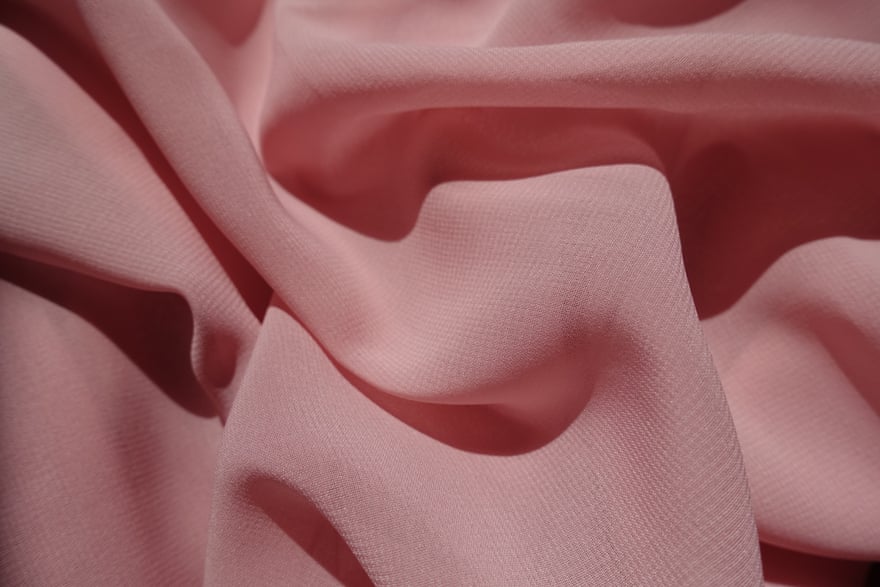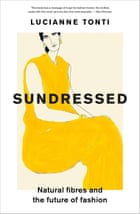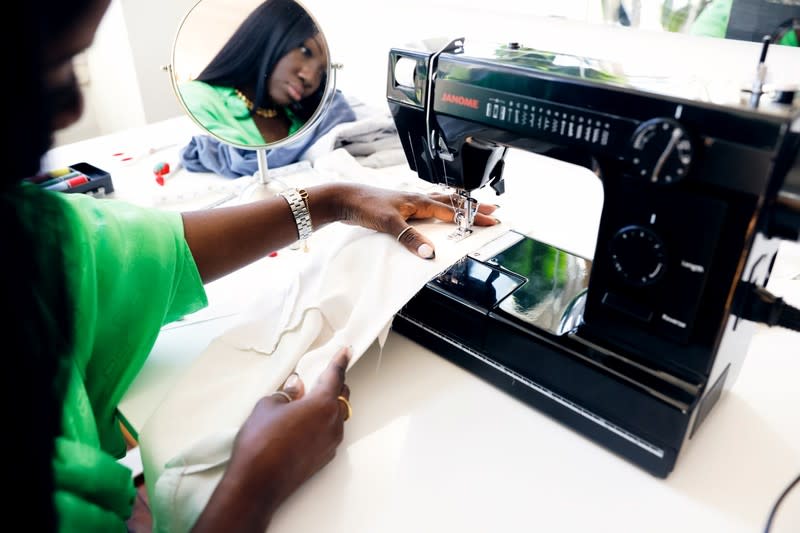Rayon unravelled: fashion’s most confusing fibre has a dark past but hopeful future | Fashion
[ad_1]
Rayon is a soft, silky fabric that is perhaps the most confusing of all the textiles. It’s sometimes called viscose, modal, lyocell, tencel, acetate or bamboo. It tends to feel denser and more fluid than cotton or linen, but even this depends on how it’s been extracted and spun.
The best way to understand rayon is to consider it an umbrella term for textiles that are made from cellulose, the building block of most plants. It can be extracted from straw, cotton waste and other natural materials, but in the case of rayon, it mostly comes from the wood pulp of pine, eucalyptus or beech.
It is often marketed as an eco-friendly fibre because it is made from natural, renewable materials (trees). But, like a lot of sustainable materials, there are a few dark clouds over its credentials.
According to the not-for-profit Canopy, 200 million trees are felled each year to make textiles. Of the 6.5 million metric tonnes of rayon produced every year, almost half comes from ancient and endangered forests.
Forests are integral to the fight against global warming because carbon is stored in the woody biomass of tree trunks and branches, and in the roots, shrubs and soil that make up the forest floor. Given the immense beauty of forests, and the plants, animals and birds they provide homes to, the link between rayon and deforestation is a particularly sad truth and one of fashion’s best disguised secrets.
Amanda Carr, senior lead on the CanopyStyle campaign, says in this forest-based fabric supply chain there is an opportunity to steer investments towards solutions and away from problems. “It is like we are standing on a cliff edge and we have an opportunity to build a fence at the top versus a hospital at the bottom.”

Hazardous waste turned the river water dark red
Production of rayon has approximately doubled in the last three decades and its percentage of the global fibre market is continuing to grow (in 2019 it was 6.4%). Carr says Canopy is working to ensure this growth is not facilitated by further deforestation. Their work is at least partially responsible for the many fashion brands describing their rayon, viscose or modal products as FSC or PEFC certified – meaning it has come from a sustainably managed forest or plantation.
The carbon footprint of rayon is further complicated by the process of turning wood into a textile. Unlike cotton, wool or silk, which come out of nature smooth, elastic and ready to be spun, converting a tree into fabric can be highly toxic to both workers and the environment.
Rayon also has links to some of the world’s darkest history. In the midst of the second world war, the Nazis forced prisoners to labour in rayon factories. There are accounts of the chemicals (sulphuric acid) burning holes in their uniforms, causing injuries anywhere it touched the skin, while emissions resulted in neurological side effects like blindness and psychosis.
These issues have persisted into the 21st century. A 2017 report by the Changing Markets Foundation found visible and highly odorous pollution on production sites in India that belonged to the Aditya Birla Group – the world’s biggest viscose producer.
Hazardous waste had turned the river water dark red; an independent laboratory test revealed that the air had 125 times the level of carbon disulphide recommended by the WHO; the surrounding villages did not have access to safe drinking water and, in one alarming instance, 60 villagers fell seriously ill and lost the ability to walk. Aditya Birla Group denied that these problems were linked to their operations.
However, similar problems have been reported across China and other parts of India and Indonesia – and the issues are not limited to one company.
The Changing Markets Foundation report made several recommendations on how to make viscose rayon production more sustainable, with a specific focus on air pollution, water pollution, disposal of solid waste, energy sources, energy consumption and workers’ health and safety. The foundation suggested implementing closed-loop manufacturing to ensure the waste from the chemicals was recovered and recycled where possible, and that the exhaust air was condensed and captured to recover the emissions of carbon disulphide and reuse it.
By 2020 Aditya Birla Group announced that it has set a target for all of its manufacturing sites to be compliant with EU BAT standards and verified by the end of 2022.
Kathleen Rademan, innovation platform director at Fashion for Good, says “manufacturers responsible for 50% of global viscose production have committed to responsible production”. She points to Spinnova and Infinited Fiber Company as examples of companies who implement best practice chemical management. Lenzing, one of the biggest viscose producers in the world, has trademarked Tencel which is also made using closed loop processes.

The report concluded that viscose has the potential to be a sustainable fibre if production was improved; alongside the responsible sourcing of raw materials.
Voluntary certifications are not enough
So, what do responsibly sourced raw materials look like? Certifications are widely considered good, if imperfect, tools to set standards across different countries for responsible forest management. Most significantly, they guarantee traceability to ensure the source of the rayon was not an ancient or endangered forest.
Pointing to the fact that trees and forests are a significant aid against a warming planet, Carr says Canopy’s priority is to ensure no viscose rayon sourcing occurs in ancient or endangered forests.
But she notes certifications are constrained by scale. Each one is applied from a local viewpoint, and often the ecological considerations or planetary needs demand a more global or regional perspective. “This is not the kind of planning that voluntary certifications applied by individual corporations accomplishes,” she says.
The next step is to find sourcing solutions to replace fibre from forests altogether.

Turning old textiles into new
Any plant-based material can potentially serve as a source of cellulose and be dissolved to make fibres, so theoretically all natural fabrics and even agricultural waste could be regenerated into viscose rayon.
According to Textile Exchange, the market share of ‘recycled’ cellulose fibres is very small, but a lot of ongoing research and development means it is expected to increase significantly in coming years. Recent technological advancements have made it possible to convert some textile waste into new materials.
The process can be much more efficient than converting trees because of the high cellulose content of some fibres, such as cotton. According to Canopy, on average it takes 2.5–3 tonnes of trees to create 1 tonne of viscose pulp, but it takes only about 1 tonne of recycled cotton or rayon to make 1 tonne of viscose pulp. Given this, Rademan says, “it makes more sense to try to valorise the resources we already have via textile-to-textile recycling” instead of relying on virgin resources like trees.
Considering the amount of textile waste sent to landfill every second, the notion that we can turn old textiles into new textiles with superior performance properties to synthetics is extremely interesting. Viscose is better on the body than synthetics; it breathes against the skin and does not have a complicated relationship with oil or sweat, which makes it nicer to wear. And it doesn’t shed plastic microfibres into waterways every time it is washed.
While we are in the early days of these solutions, with large-scale infrastructure required for collection, sortation and recycling, there are already innovators operating in this space. Lenzing’s Refibra line is made of approximately 30% recycled cotton.
Seattle based company Evrnu launched a fabric called NuCycle that is made from recycled textile waste in April of this year. And in May, fast-fashion giant Inditex invested €100 million in Infinited Fiber, a Finnish startup that also creates fabrics from textile waste.

Despite viscose rayon’s dark and complex history, which in many ways extends into the present, it could have a hopeful future.
If we can eliminate trees and forests from its sourcing, replace them with textile waste, and further innovate production to be closed loop and non-toxic, viscose rayon could truly earn the eco-friendly reputation it has already been given.
[ad_2]
Source link


